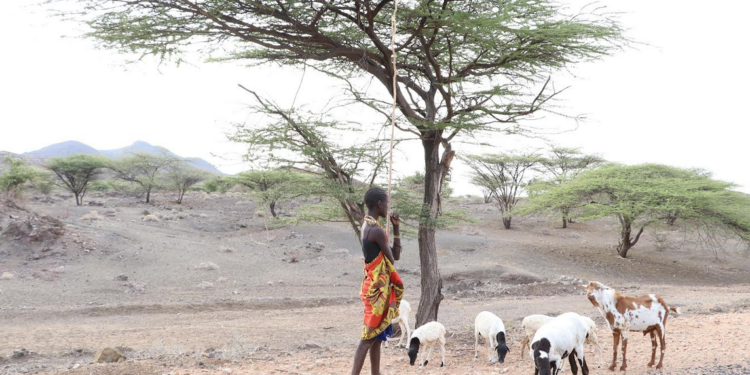Over 3.5 million children in Kenya will be out of school when schools reopen for first term in January 2023, due to the ongoing drought, Save the Children said.
A 2021 study by the Global Out of School Children Initiative revealed that there are more than two million children aged between four to 17 years that have been out of school since the third term of 2021. The Long Rains Assessment Report by the National Disaster Management Authority projects that an additional 1.6 million children are at high risk of dropping out of school as schools reopen for first term next year as the hunger crisis worsens.
Mandera, Garissa, Wajir, Turkana and Marsabit are among the worst affected counties with Mandera having the highest number of school dropouts of 295,470 children aged between 4-17 years old. Garissa follows with 289,410, Wajir at 266,540, Turkana at 253,640 then Marsabit at 107,600 dropouts. Other counties also greatly affected are Narok with 83,020, West Pokot with 80,070 and Samburu with 64,818 school dropouts.
The 2022 Long Rains Assessment, October to December projection period report for Arid and Semi-Arid Land (ASAL) region indicates that 4.35 million people in Kenya are facing high levels of acute food insecurity.
Read: KCB Commits Ksh130M To Drought Response
According to a recent survey done by Save the Children in June 2022 on the impact of the drought in 17 counties, a significant decrease in enrolment is seen in all the counties with an average of 52% affected schools across all levels (Early Childhood Education, Primary and Secondary).
Among the key reasons for high school dropout were highlighted as inadequate or lack of school meals, poor learning environment, lack of teachers, dilapidated infrastructure, resource-based conflicts and climate-related emergencies. Shortage of water in schools is also a major factor. An analysis of water in primary and secondary schools at the 17 counties targeted by the education sector revealed that 460 schools have no water source and 1,896 schools only rely on harvesting rainwater.
“Kenya is experiencing one of the worst droughts in 40 years. Children are the most vulnerable groups and are usually the most affected in such emergencies. Parents have to migrate with their children in search of food, pasture and water for their livestock. This compromises their access to basic facilities such as food, clean water, healthcare and education,” said Yvonne Arunga, Country Director for Save the Children Kenya and Madagascar.
Northern Kenya is majorly a pastoralist community and right now, parents are unable to pay school fees because they have lost their sources of livelihoods. Communities are majorly focused on basic survival skills and school-going children have to help their parents take care of livestock and carry out domestic chores.
“Every minute that goes by means more children’s lives are increasingly at risk. Time is quickly running out for children. They’re missing out on education, making them more disadvantaged. We are calling on the government to make every effort to ensure maximized and efficient running of school feeding programs during drought situations, especially in the areas worst affected by drought. Most of these children depend on these meals,” said Yvonne.
Read: How Ezra Chiloba, Once Form Two Drop Out, Came To Manage Kenya’s Elections
Save the Children is also calling on the government to ensure there is adequate supply of safe water to schools during the drought for purposes of drinking, sanitation and personal hygiene in order to enhance a conducive school environment that will encourage children to stay in school. The government should also put in place real-time monitoring systems to assess situations in schools at the onset of drought to enable early responses before the impact school closures is experienced.
To address these gaps in education, Save the Children is implementing the Operation Come to School Project dubbed ‘Watoto rudi Shule’ to increase enrolment and retention of children who are out of school in Wajir Turkana, Baringo and Bungoma Counties. The organization will work in partnership with the various departments – Ministry of Education, Teachers Service Commission, Youth, Gender and Social Service Department, County Directorate of Education Office and Public Health as well as other education stakeholders in the targeted Counties. This will ensure complementarity with county level priorities and project education priorities in the proposed project.
Save the Children is providing lifesaving assistance to children and their families affected by the drought in Turkana, Mandera, Wajir, and Garissa Counties through integrated health, nutrition, food security, child protection, water hygiene and sanitation and education interventions. We have reached 737,931 people including 405,511 children this year.
Email your news TIPS to editor@thesharpdaily.com


















